First Look: DT Swiss' New 240 EXP Hubs
"Hubs for life" is how DT Swiss’ 240s were first introduced to me many years ago. Rather than considering them a wear part, needing replacing in a cyclical manner, they were labeled an investment. Sure, the bearings would eventually hit their limits, but put a fresh set in and keep on riding ad infinitum.
At the heart of this mantra sat the Star Ratchet system. Something so beautifully simple that it left you asking why would you do it any other way. Countless other small details, rarely seen by the user, were employed to make the 240 hubs a go-to for anyone after low weight, high performance and outstanding reliability.
I was sold on how my friend described the 240 and have cherished every set I've ever owned, never selling a pair and transferring them from rim to rim, bike to bike.
At the heart of this mantra sat the Star Ratchet system. Something so beautifully simple that it left you asking why would you do it any other way. Countless other small details, rarely seen by the user, were employed to make the 240 hubs a go-to for anyone after low weight, high performance and outstanding reliability.
I was sold on how my friend described the 240 and have cherished every set I've ever owned, never selling a pair and transferring them from rim to rim, bike to bike.
240 EXP Hub Details
Hub Options: Classic J-bend (28 & 32 spoke holes) or straight pull (28 only spoke holes)
Front Axle System: 15/100mm, 15/110mm, 20/110mm, 20/110mm BO & Lefty
Rear Axle System: 12/142mm, 12/148mm, 12/150mm & 12/157mm+
Freehub System: SRAM XD, Shimano standard & Micro Spline
Brake Mount: Centerlock & 6-bolt
Weight: From 104g front and 199g rear
Price: From $220.90 (€149.90) front and $433.90 (€293.90) rear
More info: DT Swiss Hubs
Hub Options: Classic J-bend (28 & 32 spoke holes) or straight pull (28 only spoke holes)
Front Axle System: 15/100mm, 15/110mm, 20/110mm, 20/110mm BO & Lefty
Rear Axle System: 12/142mm, 12/148mm, 12/150mm & 12/157mm+
Freehub System: SRAM XD, Shimano standard & Micro Spline
Brake Mount: Centerlock & 6-bolt
Weight: From 104g front and 199g rear
Price: From $220.90 (€149.90) front and $433.90 (€293.90) rear
More info: DT Swiss Hubs
But now there's a new 240 EXP hub that uses DT Swiss’ updated Ratchet EXP freehub system, first seen on their 180 EXP hubs, come in a huge variety of sizes, fixtures and freehub versions and were even considered as part of the whole bike system throughout their development.
Reliability
Just grabbing your bike and going for a ride is a simple pleasure, and one that DT would like to play their part in. Having a bike that rattles around from worn-out bearings or slips when you're really pushing on the pedals isn’t fun. Neither is time spent in the workshop instead of riding.
The new 240 rear hubs see an increased bearing width between the two main hub bearings. The drive side bearing now sits inside the threaded ring of the Ratchet EXP system, increasing axle stiffness by 15% and reducing axle deflection, which should up the bearing life. The 240 EXP uses stainless steel bearings, as opposed to the ceramic bearings in the 180 hubs, and also sees those bearings increase in size.
The design of the Ratchet EXP system is so that the surface area transmitting the load from freehub to hub shell is as big as possible. All teeth on each of the ratchets engage at the same time, and when compared to a standard pawl design the difference in contact area is clearly seen. This increased area spreads the load and so lowers the pressure on the faces leading to reduced wear. DT Swiss also spec 36-tooth ratchets as standard to maintain good reliability for all users. The single spring in the Ratchet EXP system now ensures a faster full engagement between the two ratchets, resulting in less wear between them.
Maintenance
From time to time, especially if you're riding in extreme conditions, a bit of maintenance can go a long way to having a smoother running bike and ensuring a long lifespan of your hubs. The whole Ratchet EXP system can be dismantled for some normal maintenance without any tools and a degree in engineering. There are tool-free end caps with small notches designed into them to make removal by hand hassle-free.
The Ratchet EXP system uses fewer parts compared to its predecessor. So, there are fewer parts to fall on the floor and bounce under the washing machine. The single spring inside the system is now straight too, so no need to make sure it's in the right way round.
DT Swiss also made some small modifications to the flange dimensions so that, dependent on your rim, you can mostly run the same spoke lengths left and right. Their spoke length calculator is another tool in place to make maintenance or wheel building easier.
Options
Not wanting to restrict any customers from having a new 240 EXP hub, DT Swiss offer it in an eye-watering number of configurations for both road and mountain bikes.
Focussing on the mountain bike options there are classic hub, using J-bend, and straight pull options for the spokes in 28 or 32 spoke counts. Boost, non-boost, Super Boost and DH width options with end caps for through axle and quick release. The end caps from the old 240s will also fit on the new hubs.
There are Centerlock and 6-bolt options for disc mounting. And if you've got a frame with rim brakes then there are even options without disc mounts for you. SRAM XD, standard Shimano and Micro Spline freehub options exist for the freehubs, all interchangeable on the same hub body. All SRAM, Shimano and Campagnolo options are available for the road too.
As standard the 240 EXP comes with a 36-tooth ratchet, but there is an optional upgrade to a 54-tooth for riders who prefer more points of engagement.
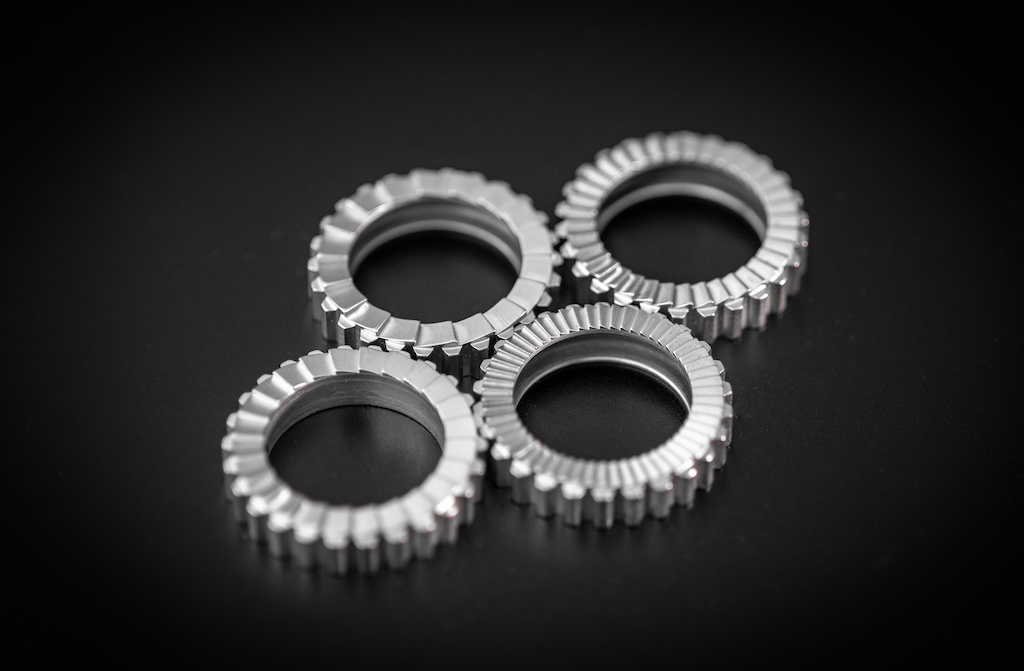
Points of engagement, weight, reliability, and the hub's role in the greater system of a suspension bike are all things DT Swiss considered when developing the new 240 EXP.
Complete System
What's mightily impressive is how DT Swiss talk about their hub development as part of the complete system of a bike. Many manufacturers focus solely on the product in hand, and can often forget about its role in the greater sum of parts.
The new 240 EXP's low weight might not be as significant when compared to other areas you can save chunks of weight. But grams do add up, and lighter hubs also benefit your un-sprung mass on a suspension bike.
DT's choice to go with a 36-tooth ratchet also tells a lot about their consideration of the hub's role in a whole bike. Once again, the topic of pedal kickback raises its head, something being talked about a lot at the moment. DT recognize that the number of factors involved in this topic is huge, and that ultimately, it's a balancing act of all these factors that they need to do.
Pedal kick as a theory isn't hard to get a hold of, although be warned - it can take a turn for the extra-nerdy very quickly.
When we go through our travel on a suspension bike the distance between the rear axle and bottom bracket increases, and something needs to give in the drivetrain to accommodate for this. If our freehub is engaged, either when we're pedalling or locking the wheel under braking, that increase between the rear axle and BB causes the upper part of the chain to pull on the cranks and we can measure the angle the cranks would move dependent on what gear you’re in, how much travel you use and how much your kinematic design changes that distance between the rear axle and BB.
If you're freewheeling, though, your freehub isn't engaged. That means the chain pull from suspension compression would have to cause the freehub to at least match the angular speed of the hub body before pedal kickback could be considered a problem and bring the points of engagement into the equation. Once the freehub and hub body are spinning at the same speed the number of points of engagement comes into play at how fast that impact at the rear wheel could turn into pedal kickback. A fast-engaging hub could potentially make it possible to feel those pedal kickback issues more often, while a slower engaging hub would feel them less often.
On the other end of the scale is the backlash of the hub versus points of engagement. That faster engagement hub would take less time before your pedal stroke would turn into the bike going forwards while the slower engaging hub would take a little longer.
DT cites a triangle of balance between points of engagement, weight and reliability. More points of engagement, above their 54-tooth option, would require an enlarged construction to have the same reliability, and so upping the weight. More points of engagement would up the chances of pedal kickback to be prevalent in the riding experience too.
According to DT, using 36-teeth strikes just the right balance between all these factors. It picks up well when you start to pedal, doesn't interfere with the rider or suspension as much as a faster engaging hub when you hit a bump, and can be packaged neatly inside a low weight and high reliability system.
All in all, pretty tech minded for just a simple hub.
Author Info:
Must Read This Week
Sign Up for the Pinkbike Newsletter - All the Biggest, Most Interesting Stories in your Inbox
PB Newsletter Signup

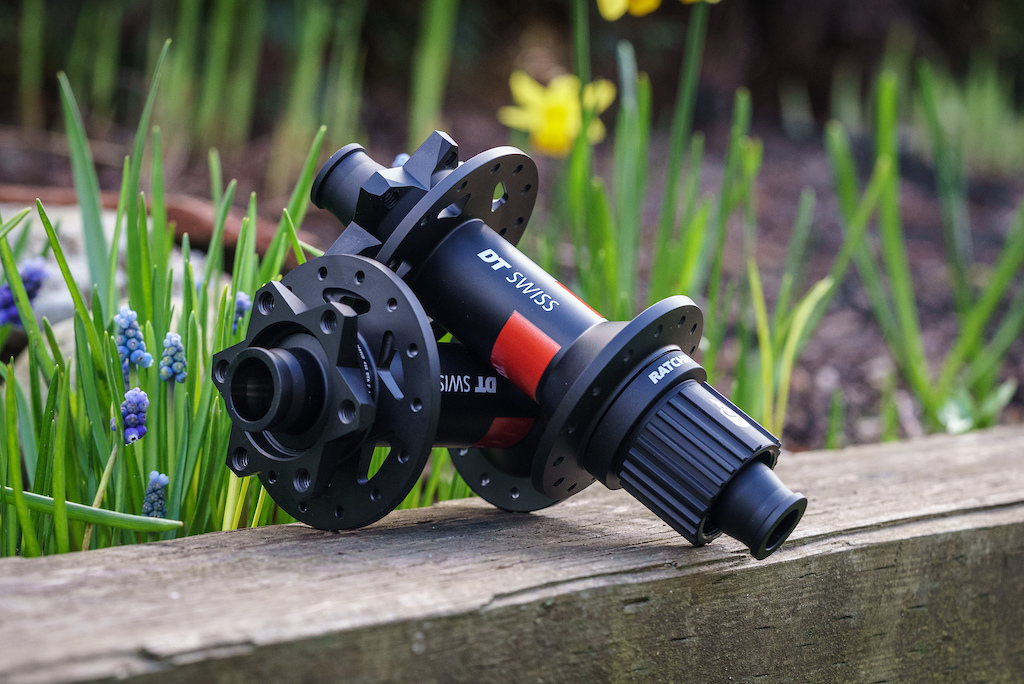
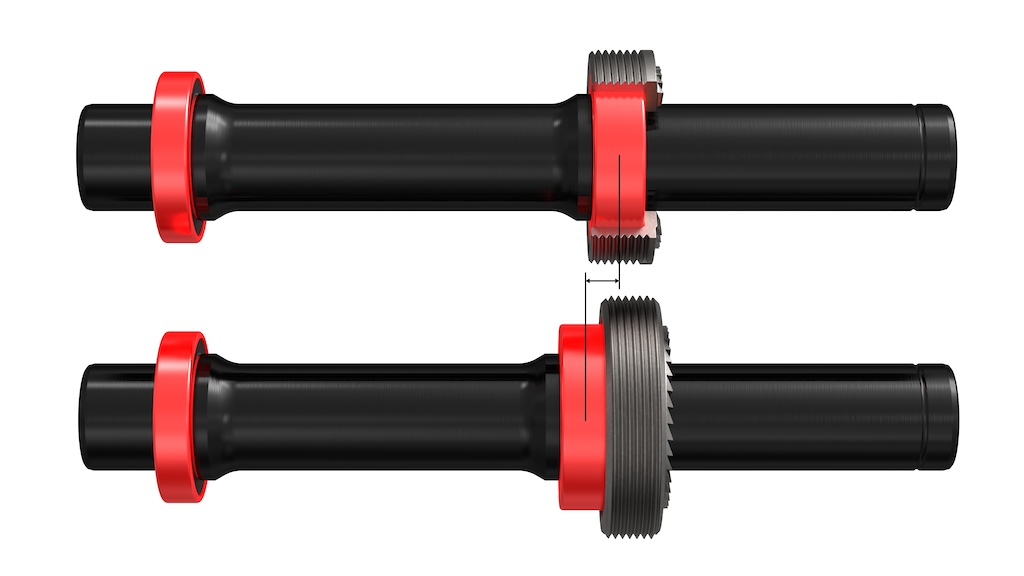
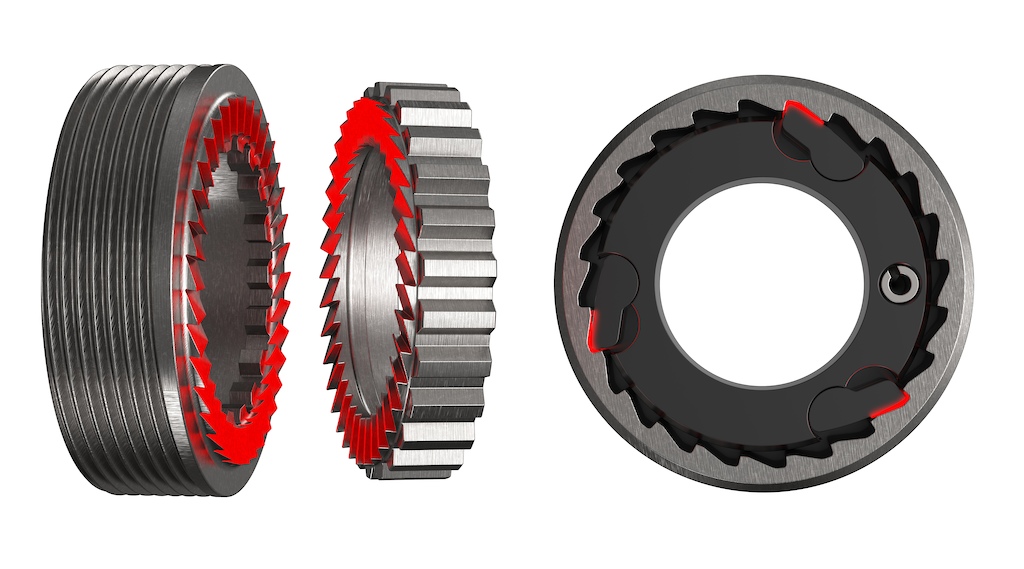
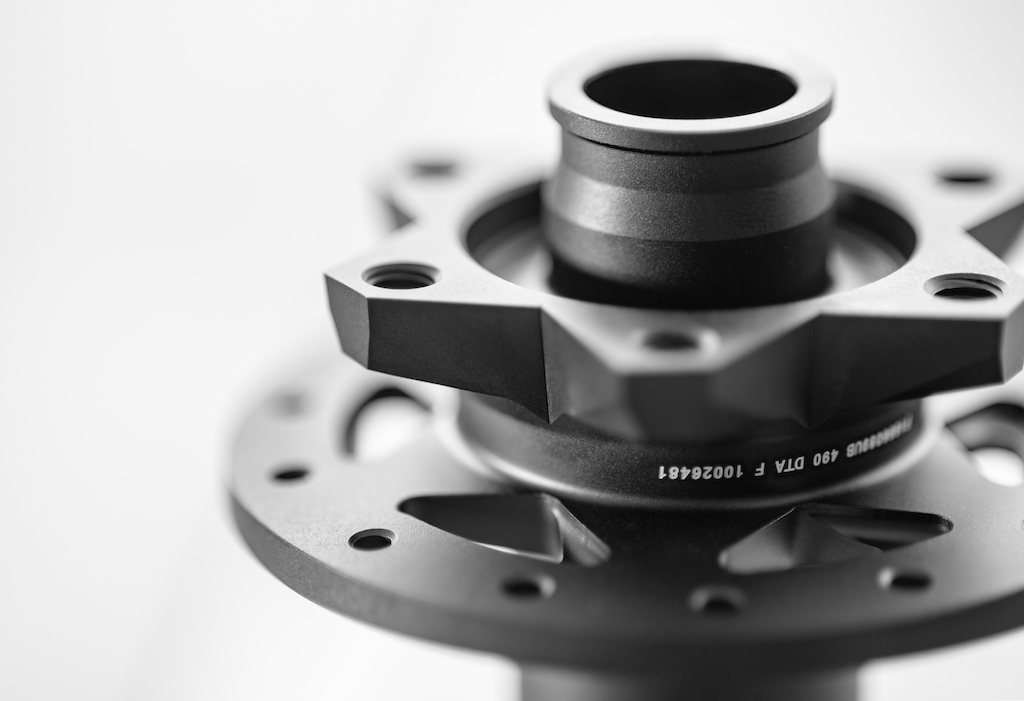

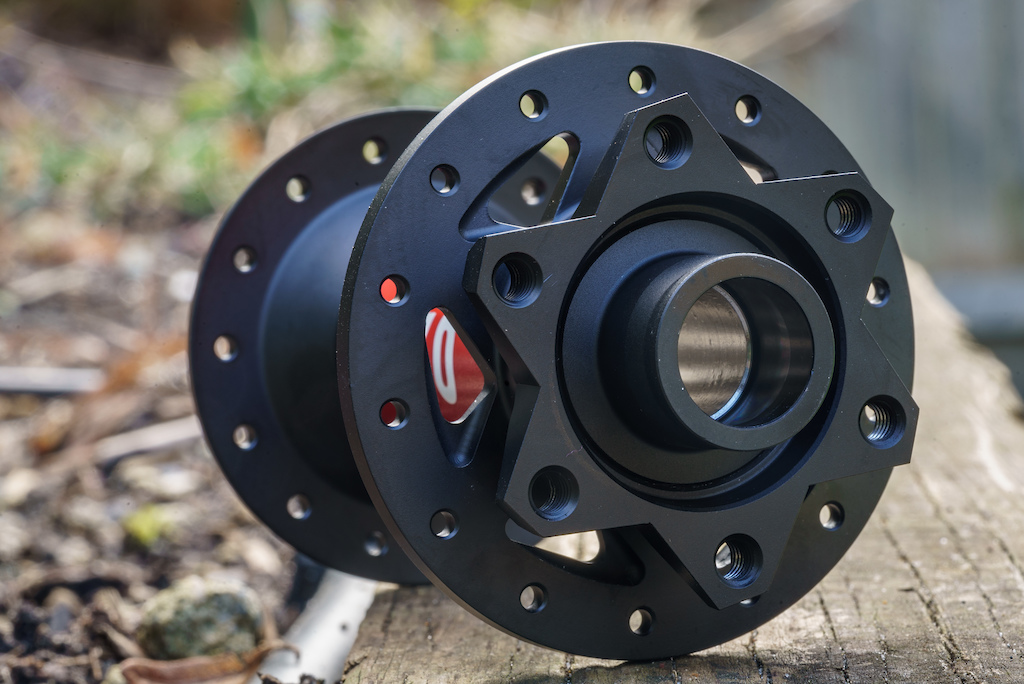
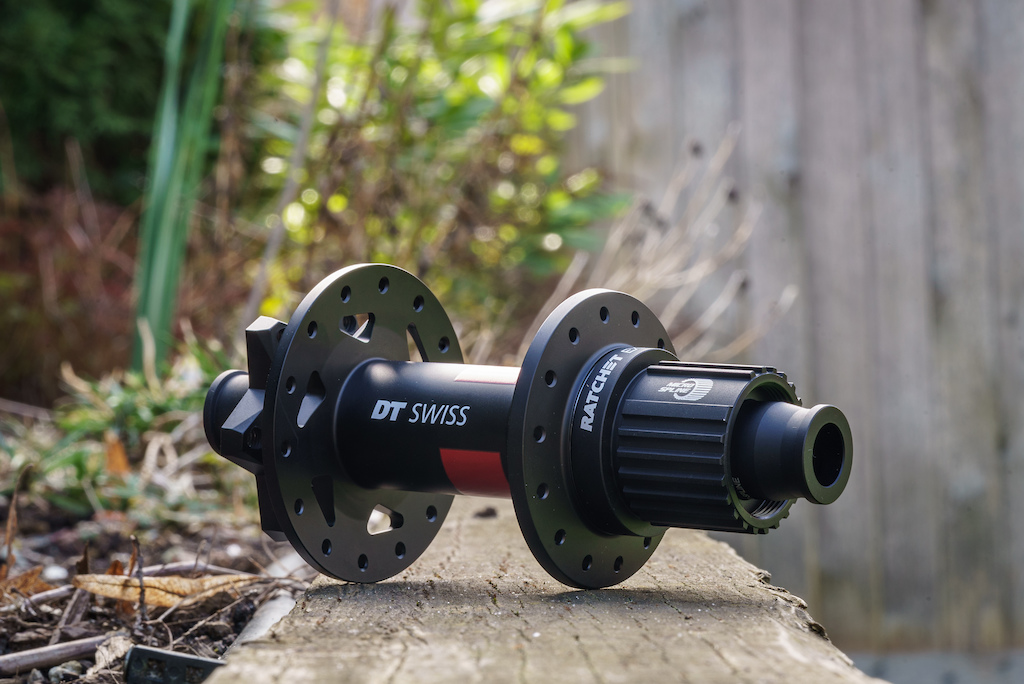
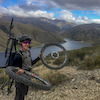
Lucky I didn't buy some for my 135 rear end bike with 20x110 front fork. And my 142 bike with 15x100 fork. Then my 148 bike with 15x110 fork. And now my 157 bike. Maybe I'll finally get a pair in 2022 to match my 160 rear frame with 20x110 boost fork.
Wondering though, I've got a set of 440 hubs. Are there endcaps to covert the rear from 135 to 142x12? It is common for other hubs including some of theirs, but I can't find anything about the 440. It is as if it was never part of their line up.
Also, I've got a 350 hybrid rear hub coming my way. It is actually e-bike specific and even though I don't ride an e-bike, I bought it because it has a steel freehub body. I didn't like that the cassette eats into the hub body of the 440 (makes it a bitch to take the cassette off) so a steel spline (like for the Syntace MX hub or the Nukeproof Horizon hub) or just a completely steel freehub should solve that. I wonder if the steel freehub body would also fit their other hubs (or at least my 440 rear hub).
I've found getting new end caps, and converting freehub bodies, straightforward (for anything from 350 series up) and this is one reason why I'm reasonably keen on DT hubs. Sure others do it, but often slower, or at higher cost, or some not at all (inherent design means you can never change, e.g. crappy oem designs).
That argument against evolving standards never holds up. If those frames are still being used, they're still going to need hubs.
Maciag has a conversion kit that states 440 with enddcaps and axle
www.maciag-offroad.de/dt-swiss-umruestkit-nabe-hinten-142-mm-12-mm-steckachse-fuer-240-440-freeride-naben-sid96484.html
"so in the near future we will design all 157mm hubs with the wide Superboost flange distance."
Easy to remain neutral, until there is money on the table...
"While the dish ratio of Super Boost Plus is slightly more even than that of Boost 148, the gains are only marginal. However, it’s still far off the perfect 50/50 ratio of 157 DH hubs." Thats a simple enough to understand statement - BUT who wants to run a DH cassette on their enduro bike? This SB+ standard fits with the way bikes changed because of the influence of enduro - but unlike other fads like tyre inserts, it managed to upset the majority of the market.
Its a marginal gains argument, and this wont ever end in any industry with limited real differentiation between downtube stickers (Brands).
As for the endcaps, indeed once the new 350 hub is in I'll try to fit them in my 440 hub. If it works, I'll use that one to build a new wheel too.
For anyone who's hot on these hubs (and DT in general), you ought to check out ERASE hubs as well. ERASE is a fairly young brand our of Belgium, and use a very similar engagement setup (one static ratchet, one dynamic ratchet), but come stock with 60T, instead of 18T or 36T of the standard DT 350/240. I'm not sure how they compare to these new hubs, but they were lighter than the last gen 240 hubs, and they have a titanium driver body and ratchet system. They also use angular contact bearings. We have built a couple pairs now, and they are quite nice.
A few photos of them posted in my profile gallery if anyone wants to have a peak.
Your argument makes sense that even tension on both side of the wheel will make a more durable and predictable wheel. There are more than one way to get to even tension however.
Now with Asymetrical rims becoming more and more common place that is a big help for equal tension.
Spoke choice can help even out tensions and lateral stiffness as well, when I first built wheels that was my go to method. I would use straight gauge 14's on the drive side and DB 14/15 spokes on the NDS, or 14/15 on the drive side and 14/16 or 15/16 on the NDS, dependant on the application and the rider. That method worked pretty well for me.
I now prefer to use mixed lacing with 2x on the Drive or disc side and 3x on the opposing side. This tends to get the spoke tension almost exactly equal side to side and if you are using a rim with even just a small offset drilling, like 2mm you are set. It works because lateral wheel strength is driven by triangulation bracing angle and spoke length.
There is an obvious argument against moving the NDS wheel flange outboard, which is that it was already plenty strong. The wheels did hold up fine under WC DH riders, I do however wonder though now that 29" wheels look they are going to be the dominate wheel size for DH rigs if the WC riders may be wanting some additional bracing angle on those big hoops. So push that NDS flange out, get a rim with just a bit of drilling offset and perhaps use a mixed spoke pattern or spoke type, and you should have a stronger and stiffer wheel than the traditional DH hub would have been able to provide.
Just my opinion though.
Asymmetric rim profiles definitely help even out tension also on boost and super boost, though we're seeing that on a lot of the deeper offset rims, the steeper wall takes most of the load and is more prone to denting than symmetric hoops, so there is some trade off. Nobl just released their new carbon hoops with a novel profile that allows for offset spoke holes, while mitigating that decrease in dent/crack resistance that seems to be present in asymmetric rims - will be interesting to see how well it works.
I have always been at least a little suspicious of the really high offset rims, there is just so many forces there that are constantly changing due to normal and lateral loads. Those Nobl rims do look really interesting, and will be good to see how well they work.
I occasionally read some of the papers on bike wheels that get done through university programs and there is typically some good info to be gleaned from them.
Like this one: people.duke.edu/~hpgavin/papers/HPGavin-Wheel-Paper.pdf
But there are a lot of them out there.
0_o
I've thought about that method of using 2x lacing for driveside and 3x lacing for nds (rear), but I've yet to try that. It's a good idea... doing so marginally increases the bracing angle of the driveside.
While we're on the subject, the flange geometry of some of the DT hubs is really backwards, imo. They've opted to prioritize even spoke lengths, but in doing so, they've actually further unbalanced the spoke tensions. Doing the opposite of what they've done, so tall ds flange and short nds flange, would increase the bracing angle of the ds and help balance the tensions.
One time, I built a traditional box section road wheel for myself with 32, DT 14 gauge, 3x on drive and NDS. Worked fine for a while. But then I put on a bit of weight one winter and started breaking NDS spokes every few rides. De-tensioned the wheel replaced all the NDS spokes with 14/15 db spokes and have been riding it trouble free for the past several years.
When you run 2x drive side you do gain a tiny bit of bracing angle, but the bigger factor is that those spokes are shorter, usually by close to 10mm. Spoke length is a really big factor in lateral stiffness, and therefore spoke tension.
I agree about the hub flange sizes seeming backward on a lot of hubsets, for wheel strength. The move that really baffles me is when they make both front and rear flanges on one side the larger diameter.
Do you buy a new car and whine about the brake pads being different? Upset you can't drop an engine between a Hyundai and a Ford? Get on Pinkcar.com and cry about how the limited slip differential on your Mazda won't work in your new Dodge?
For f*ck sake. If you don't like change, why the f*ck are you buying a new bike? Oh, you want improvements of a new bike, just only SOME improvements? I don't care that I can't swap hubs from my 2012 trail bike to my 2018 enduro, the new bike is better in EVERY SINGLE WAY. Why would I handicap it with inferior components?
The 2012 bike is still fully serviceable, I gave it to a friend for his wife to ride. $5000 MSRP bike 8 years later is basically worth nothing on the market.
Anyway, I welcome your downvotes.
Do you want to pick a year that you wanted new standards to stop then? I have lifelong parts that I bought in the mid 90's.
Should I be mad that I can't use my 135QR rim brake Chris King Hubs, or my 1" threaded CK Headset, on my current mountain bike?
No of course not. I still do use them on my kick around on a family ride/occasional commuting bike, which happens to be a 1995 Fat Chance, which only accepts parts with old standards, and I really love that I still have them.
The point @JSTootell made was you can't have innovation in all areas of the bike without changing the standards. I don't think the original 130mm MTB rear hub would have been that great once disc brakes, 12 speed and 29" wheels were adopted. In fact it is pretty easy to imagine that if bike companies were told that you can never use anything but a 130 rear hub that we would have gotten to where we are now at all. The same thing goes with nearly every part on our modern bikes. You don't see.27.2 seatposts, 1" steerer tubes, QR hubs, not tubeless, square taper BB's on our modern bikes for a reason. Or if you want to go back further there is undoubtedly someone that would call all those "new" standards, and lament about how there 120 hub with wing nuts, wooden tubular rims and cotter pin cranks were really as far as bike tech needed to go.
Perhaps not every standard is something that you personally see the advantage of or want for your bike. But that does not mean that they are not without advantages or aren't exactly what someone else needed.
They look nice, they feel nice when you turn the axles. Paper weights?
To each his own I guess.
But something like hub standards don't change that often, infact they have effectively changed once since I first got a mountain bike in 1989. That bike had a 135 rear hub, which is the same thing as a 142 hub if it is a convertible hub. Sure my Trek 950 didn't have disc brakes, but that is a separate issue.
There was an addition of DH rear hubs since then, but that hub standard was never used by bikes meant to pedal a lot of miles. The DH front hub shell was the same width as my 1989 Trek 950 would have had if it was a disc brake hub.
Then the terrible, terrible addition of he boost hub standard happened a few years back. At that time several companies were already saying that they would be just going to the DH hub width and not use boost standards on their bikes, so it was no surprise at all when a lot of the bigger tougher bikes started coming on market with 157 hub spacing.
It is safe to say that XC bikes will not likely switch to 157 hubs for at least a while, so it is likely that people will be pissed when boost gets replaced for those bikes in...based on historical standards change rates...2047. I think that if you invested, today, in a great trouble free hub like a DT 240 that you would have made a good investment. If you were investing in one of these hubs for your 2008 QR bike, you could always buy some endcaps and make it a gravel bike hub for yourself or to sell on the used market, and that hub would spin for a ton of miles after you retired that frame.
I do kinda want to try the Onyx hubs though. They have a solid design and everyone who has them loves them. $$$ though.
All flawless.
The DT350 is better for those who ride occasionally and probably dont maintain their bike as well.
Many many many people that ride a lot have them on their bikes, so don't trash them or the people that ride them.
240s is for weight weenies, no performance gain at all. I had 240s in the past,great hubs. 350s for the past 5 years,just as great just cheaper..
That said, I didn't see anything in the article about whether or not the sound profile of the new 240 has changed.
I think that the 240 has always had the flanges cut at an angle as well, to match the spoke angle. Probably doesn't change much of anything as far as the wheel strength goes, but it is likely another way that allowed them to make the hub marginally lighter while adding quite a few dollars to the manufacturing cost.
That said, Syntace uses oil for lubrication whereas DT uses grease so I can imagine the DT hub isn't that noisy.
www.dropbox.com/s/cs2g251nz9faz14/dev-wheel-spindown.pdf?dl=0
The 240 bearings are, as others have said, quite a bit nicer than what’s in the 350, plus the hubs are convertible. Nothing wrong with upgrading bearings on a 350, but if you’re using really nice bearings and paying for labor/DT Swiss tools to access the bearings, it gets pretty expensive.
In terms of noise, enough DT Star ratchet grease will make them quieter than most pawl-based hubs on the market. Or, thin things out a bit and they’re plenty loud.
DT was always flexible and helpful to make quality hubs for whichever 'standard' you needed, but they were not the driving force.
They are light and bombproof. No reason for me to go somewhere else.
a. so much for simplicity when servicing the hub
b. go find that 3ft steel tube to use as a extension on your wrench now and break out the MAP torch. I have removed a few ratchets in my day and can say when you have a 200+lb rider that places "x" amount of torque into a wheel, its a bitch to get them to release without damaging something in the process.
I'd never buy these until they include the 54t as standard. In cheapers 350s I think it's fine but not top end hubs.
The upgrade probably comes with the bearing since you have to knock it out of the old one otherwise, ruining it. Therefore you need a new one anyway. Why not just mount it?
www.universalcycles.com/shopping/product_details.php?id=102027
From the manufacturer's point of view, it's not the best idea to use an existing tool standard for this interface because you cannot control what tool is used at the consumer level, and a lot of mechanics and end-users will damage hub components using worn or poorly-manufactured tools.
I do however agree that the interface with the vice should be two wider parallel surfaces and instead of six sided.
2. The smaller the movement, the less wear on all metal combinations. This means that the lubricating oil is less polluted. 54pt is less active than 36pt. This means less lubricant contamination.
(If 54pt is more polluted than 36pt, the Crisking Hub is a product that suffers from a huge pollution problem.)
Have a nice day.
Yeah, tell it to all those broken teeth of 54T ratchets..
The first after experimenting with different grease /freehub oil because I ran out of the DT red stuff. But warranty ratchets came in the mail that same week.
The second time after experimenting with creek water in my hubs after a series of water crossings and me becoming lazier about carrying my bike above water level on each crossing. I paid for those.
From what I see the new exp design should address the ratchet qualms from misaligned ratchet spring forces. Looks like a step in the right direction
I’ve seen one 36t ratchet fail when they first came out, it was under a 220lb beast. This was when the 36t was hollow. They now make a non milled version, as seen in the hybrid hubs.
18T = HWTXXX00NSK24S (NOT hollow) ( www.bike24.com/1.php?content=8;product=37135 ), HWTXXX00NSKZLS (hollow) ( www.ebay.com/itm/372929433395 ), HCDXXX00N1167S (Hard Chromium Plated) ( www.bike-components.de/en/DT-Swiss/Ratchet-Hard-Chromium-Plated-p7970 )
24T = HWTXXX00NSKTFS ( www.bike24.com/p2357350.html )
36T = HWDXXX00N2884S ( HWTXXX00NSK36S ) ( www.bike24.com/p2301949.html )
54T = HWTXXX00NSK54S ( www.bike24.com/p2214277.html or Bontrager www.bike24.com/p2132776.html )
www.worldwidecyclery.com/blogs/worldwide-cyclery-blog/dt-swiss-54t-star-ratchet-upgrade-kit-rider-review
*in this article, they appear to have come stock on a set of sc reserve wheels
Also, I was incorrect on the hybrid using the 36. Using a solid 24, which yes, is readily available for your purchase. So no, the 18 is not the “Only solid”
Maybe try a website other than bike24...